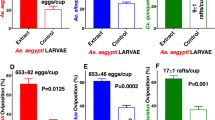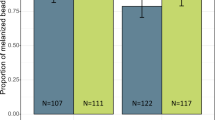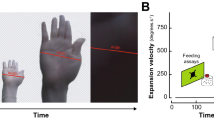Abstract
Rosen and Rozeboom1 have described a wide range of variation in larval hairiness in the Aedes scutellaris group of mosquitoes in Polynesia, and have shown that hairiness is conditioned by some environmental factor common in, but not restricted to, tree-holes. A similar situation has now been discovered in the related Aedes albopictus in Singapore; here, larvæ from tree-holes frequently have many of the body hairs longer, stouter and with more branches than in the normal form (Fig. 1). A colony established from hairy larvæ produced only normal larvæ in the laboratory, and the hairiness is clearly produced by some environmental factor. Rearing experiments showed that larvæ raised in the contents of some, but not all, tree-holes became hairy; siblings from the same batch of eggs, reared in tap water plus yeast, or in grass infusion, were normal. The related Aedes aegypti also gave hairy larvæ when reared in the appropriate medium, but Culex fatigans larvæ were not affected.
This is a preview of subscription content, access via your institution
Access options
Subscribe to this journal
Receive 51 print issues and online access
$199.00 per year
only $3.90 per issue
Buy this article
- Purchase on Springer Link
- Instant access to full article PDF
Prices may be subject to local taxes which are calculated during checkout
Similar content being viewed by others
References
Rosen, L., and Rozeboom, L. E., Amer. J. Trop. Med. and Hyg., 3, 529 (1954).
Author information
Authors and Affiliations
Rights and permissions
About this article
Cite this article
COLLESS, D. Environmental Factors affecting Hairiness in Mosquito Larvæ. Nature 177, 229–230 (1956). https://doi.org/10.1038/177229a0
Issue Date:
DOI: https://doi.org/10.1038/177229a0
Comments
By submitting a comment you agree to abide by our Terms and Community Guidelines. If you find something abusive or that does not comply with our terms or guidelines please flag it as inappropriate.



